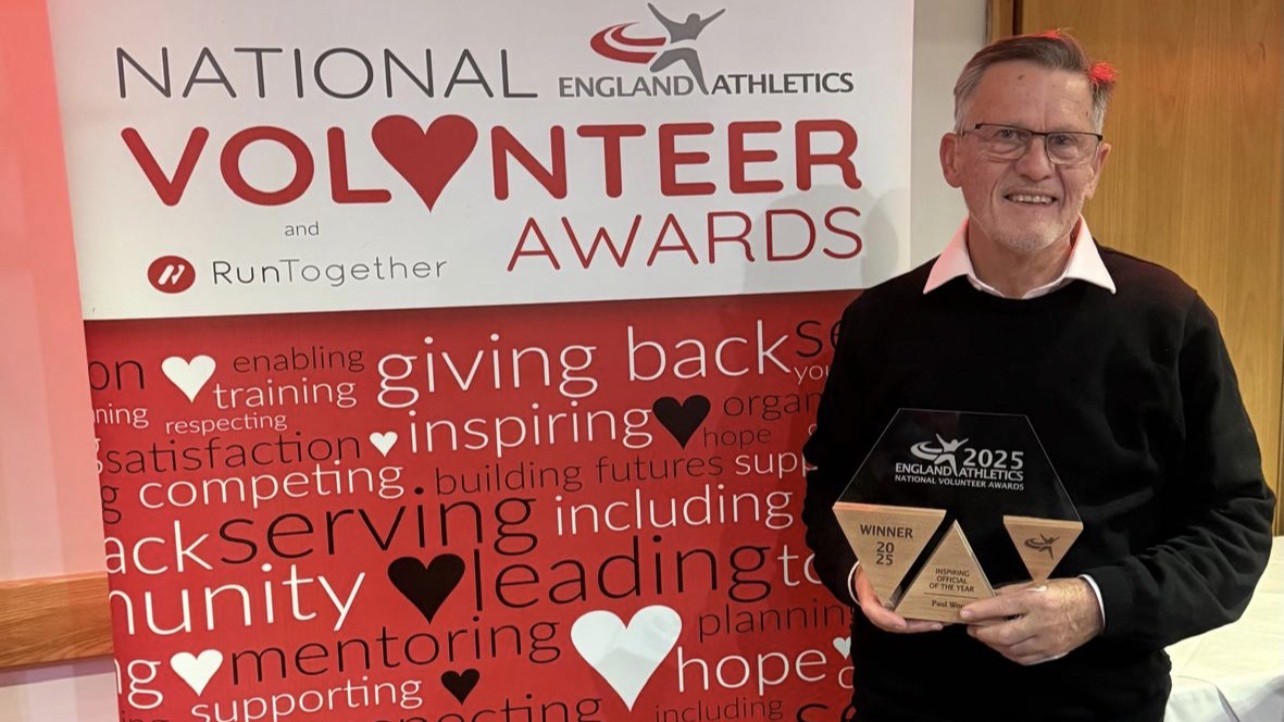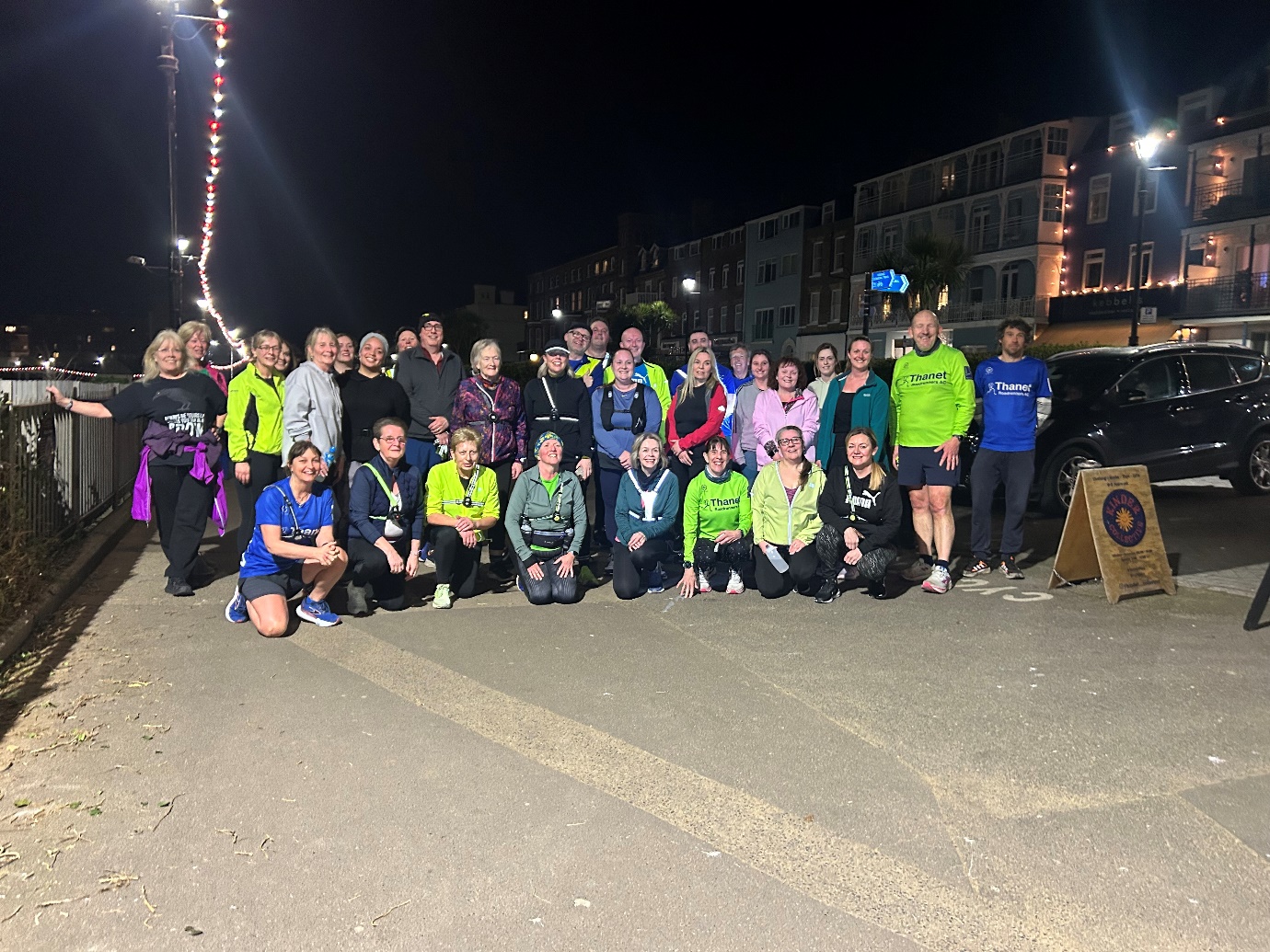
National award for past Chair of Thanet Roadrunners
A couple of months ago we proudly announced that past chair Paul Wood had won the South East Region ‘Inspiring

(Race date – July 3rd 2025)
One of the 7 races held as part of the UTMB European major, based in the Val D’Aran region in the Pyrenees. The PDA is normally a 55k race, with 3300m ascent and 3600m descent. Due to the thunder storms that had rolled in pre-race week the race was shortened to 52k with 2900m of elevation, reducing the last challenging climb to the summit of Tuc de Meddia.
I’d chosen to run the race mainly to try and see what I could learn from my DNF at the UTS 100k last year. The race offered steep ascents/descents on challenging technical trail, all of which mirrored much of what I found so hard last year.
The 3 areas that I struggled with were:
I also found the training I did last year frustrating, not really what I wanted to be doing leaving me conflicted with both myself and love of running.
The day of the race arrived. 5am start, bus to Salardu (where I was cold for the first time since I had arrived, so was glad for my warm layer & rain jacket to wear).


7am was the first wave/elites start, mine at 7:30.

I had decided to use HR as a guide/checkpoint to cross reference with how I felt, ensuring and check it was around 140-145, but not shifting over 150 until I was within sight of the end. This in line with what it sits at when running at around 80% of my marathon pace, manageable steady.
The first 18km of the race is a long climb up to Tuc do Podo. The race is known as the race of the lakes due to how many small lakes you run past in the first half.



The first 4-5k was nice, runnable gentle climbing and I was happy with how it all started. The first aid station at 8k and initially, everything going to plan. The next section is where things didn’t go to plan at all. Whilst I had a looked at the altitude, I hadn’t really engaged with what this would mean in real terms. The first really aggressive climb was around 12k, which I was very glad for poles. This at just over 2000m, for the next 6k things continued to be hard & this slowed my pace considerably. It first occurred to me the altitude may be playing a part, around 2 hours in when I begun to feel in a slightly dissociative or outer body state. Having experienced this working hard at altitude before (hiking out of bowls I’d fallen over in snowboarding) I knew what it was and knew that slowing down was the solution. Being at peace with finishing, above any need for a time pre-race, really helped here. I was happy for people to go past me and carry on at a pace that was comfortable and within my HR guidelines. However I also was now a little concerned about fuelling. Getting to 18k in 3.5 hours had me concerned the race would now take me over 10 hours and I hadn’t brought enough fuelling for 10 hours, so I’d need to use aid stations. Equally at this point I was still 5k from the next aid station and nearly out of water – this where my spare filter flask came in, filling up from the lakes and that proved a godsend as I could relax about water.
Up until this point the terrain was hard work, I was finding not suited for me to run, but I was determined and not feeling any problems with my body. Equally the mountains were beautiful & being in those surroundings was wonderful.

There was now a descent to Colomers, the second aid station & brutally hard second climb to Tuc du Salerna. The top of the descent of Salerna was too steep/rocky/technical for me to move quickly, but this soon dropped down into runnable trail, which was just below 2000m of altitude. This suited me perfectly and I got into a nice running rhythm and begun to move past runners. This was around the 30k mark, which it pretty much where I came unstuck at Snowdon the previous year. Now I felt strong and full of running. This section to the next aid station at Arties was excellent, I really enjoyed moving and during the downhills into Arties discovered just how well I could put some downhill running advice into practice. Coupled with quads that felt strong this filled me with confidence,
Reaching Arties I knew it was 12km, 1 climb and then a descent to open up on and run. The climb out of Arties had been cut from 1100m to 600m, but was very hard. 2 sections of 25%/22% grade after 42km of running was hard. At this point I was still going strong and passing people. My internal mantra “just one foot in front of the other”. I also got an insight post race in how altitude had affected me.
Climb @ 16km. 2h 12m into race, 15.8% grade 18:33 pace HR 141bpm Alt: 2395m-2457m
Climb @ 43km. 7h 48m into race, 22% grade. 18:27 pace HR 136bpm Alt:1446m – 1660m
Over 5.5 hours later in the race I climbed a slope 7% steeper, at a lower heart rate, 6 seconds faster. This really hit home just how much of a difference the altitude had on me.
Reaching the top of what I thought was all the climbing felt brilliant. It had started to rain around 42-43k in, but nothing like the torrential storms we had experienced earlier in the week. I’d also relaxed about my fuelling, dropping one 20minute interval of taking fuel, substituting for fruit in an aid station and was now confident of having everything I needed to reach the finish.
The last descent was amazing, descending fast, moving past people on the forest trails. The only fly in the ointment was an unexpected, really steep 300m climb. Once up this I could let go and ran hard to the finish. Jen (my wife) was there with a big smile. I got under the finish arch, rang the bell

Then had the moment where your body suddenly realises it has stopped running & wobbled a lot. Smiling broadly, I gently wandered over to a chair and sat down. Slightly dazed and a Little overwhelmed with the experience, very, very proud and exceptionally happy.

My finishing stats were:
Position: 476 / 1621
Men’s 50-54: 27 / 138
I also like the positional guide where you can see lost / gained positions at each check point.
Up to half way – 667 & lost 371 places from 1st check point
By the end back finished 476 & gained back 191 places
Time: 8h 56m 27 s
Dis: 51.39km
Asc: 2759m
Dec: 3042m
Avg HR 135bpm
Avg pace 10:26/km
Whilst tired, my body held up excellently. 1 blister under my left big toe, that I felt around 40k, but didn’t want to take my shoes off as seemed to be due to dirt in my shoe. Some aching in my back from my pack.
Friday / Sat my quads feel used, but walking around has been fine.
What I learned:
Pros –
Reflecting on the experience it seems that I struck upon a training balance that was sustainable & successful. It resolved the 3 issues I had pre race and allowed me to finish strong and come out of the race in a reasonably good condition.
Making peace with the need to push when it was totally counter productive, pre-race.
Being present in my surroundings and absorbing the beauty of the mountains.
To work on / found hard:
Altitude – this had a big impact on me, possibly 30-40 mins across the 16km over 2000m. The solution is to spend more time, pre race at altitude if I race something else that high
Use proper food for longer events. Post race I was talking to my wife about this, in terms of how long you can just take on gels. I reckon about 10 hours, as had no gut distress and felt good during the race, but equally I felt completely sugared out by the end and don’t think I had much more left in me for gels. This then corresponded with watching Killian Jornet’s WSER video, where he talks about just this as he’s making up his more food based fuel.
All in all it was a wholly opposite experience to last year’s DNF, but one that would have been impossible without the experience of last year.
What a great race report and so insightful. Your training leading up to this race was inspiring enough. Congratulations Kev on an incredible performance and unbelievably, several days later, helping the V50 A team at Canterbury to take home the trophy with a impressive anchor leg.

A couple of months ago we proudly announced that past chair Paul Wood had won the South East Region ‘Inspiring

Come the 12th January 2026 Thanet Roadrunners will begin their annual couch to 5km programme. This is a 9 week course that